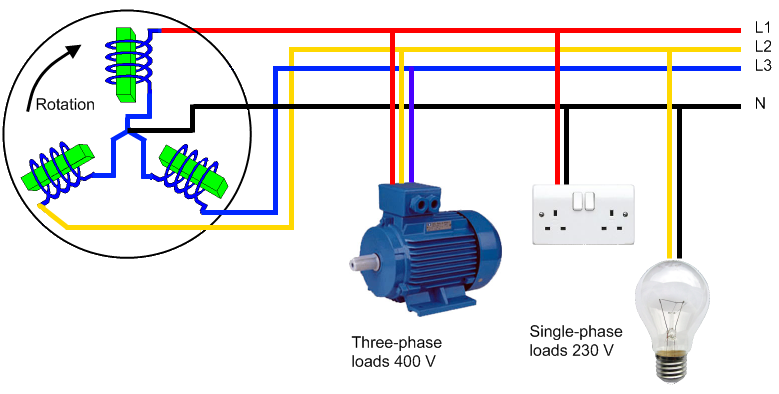3 Phase Loads
 We have had some more forum questions on this, so a quick explanation/reminder.
We have had some more forum questions on this, so a quick explanation/reminder.
Three phase systems are derived from three separate windings, either connected in delta or star (wye). Each winding can be treated separately, leading to the idea that the load in each winding can be viewed independently. I'm not going into any math's, but if you did you can prove this.
What it means in practice is that if you know the load in each phase, the total load is the simply the sum of the individual loads. Easy to remember. By using this you can turn any three phase problem into a single phase problem which is easier to solve.
Some related links: